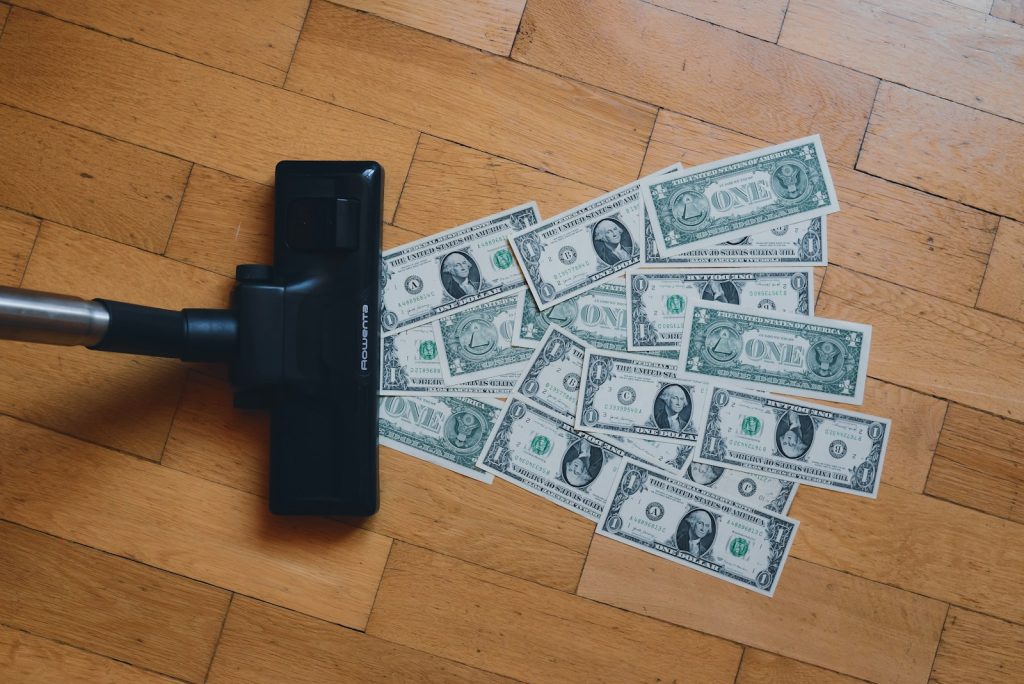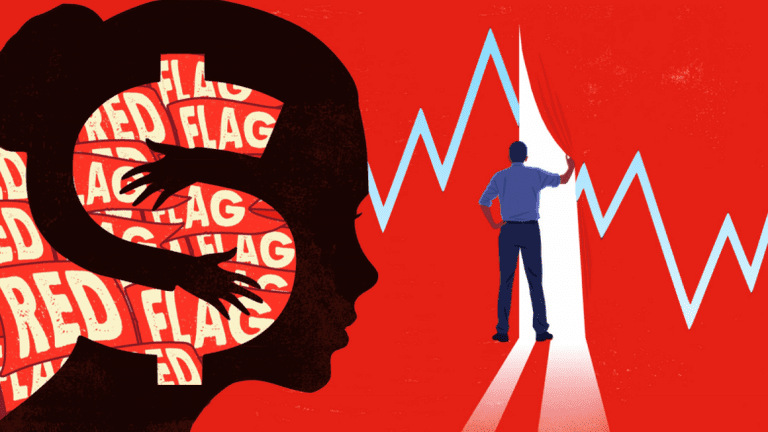The stock market is a highly underutilised (especially in the UK) opportunity for individuals to help build wealth over time. More importantly, it is not a get rich quick scheme and the fundamentals that make it work have been proven.
However, investing can also be risky and potentially incur huge losses. To navigate around these risks and make better more informed decision, I have decided to outline 7 key financial metrics or red flags to avoid when buying stocks that every investor should be aware of so that they can better safeguard their investments and avoid potential losses.
1. High Payout Ratios: A Potential Burden on Financial Resources
The payout ratio reflects the percentage of a company’s earnings distributed to shareholders as dividends. Although consistent dividend payouts would help to indicate company stability, excessively high payout ratios can spell trouble that should not be overlooked!
Why It Matters
A company allocating more than 80-90% of its earnings as dividends has limited resources left to reinvest into operations, fund growth initiatives, or address liabilities. This reliance on high dividend payouts could lead to borrowing or scaling back dividends during economic downturns.
A good range for payout ratio is generally somewhere 30-60%, indicating a healthy combination of earnings and dividend payouts that are highly sustainable without impacting growth and stability within the company.
Case in Point
- Company A: Payout Ratio = 35%
Stable with plenty of room for reinvestment and growth. - Company B: Payout Ratio = 92%
Unsustainable; the company may face difficulties funding growth, especially during economic downturns and recessions.
| Company | Payout Ratio (%) | Remarks |
|---|---|---|
| Company A | 35% | Sustainable, plenty of room for growth |
| Company B | 92% | Overextended, high risk play |
| Company C | 50% | Healthy, moderate risk with still plenty of room for growth |
| Company D | 88% | Risk of cutbacks but sustainable in healthy market conditions |
2. Declining Earnings Growth: A Red Flag for Future Performance
The earnings growth measures a company’s ability to increase profits over time. A steady decline in this metric could indicate underlying challenges, such as reduced market demand, ineffective management, or heightened competition challenging market dominance.
Why It Matters
Slowing earnings growth often translates to reduced investor confidence, potential dividend cuts, and lower stock valuations. Companies unable to adapt or innovate risk losing their competitive edge and being replaced.
In a more positive scenario, these companies could be acquired (assuming they have enough moat to remain attractive) by a competitor, which will generally result in a comfortable transition to a better player in the market.
Example of Decline
Consider a tech firm whose earnings consistently shrink on a year to year or quarter to quarter:
- 2019 Earnings: $2.0B (No growth)
- 2020 Earnings: $1.8B (-10%)
- 2021 Earnings: $1.5B (-17%)
| Year | Earnings (Billion) | Annual Growth (%) |
|---|---|---|
| 2019 | $2.0 | N/A |
| 2020 | $1.8 | -10% |
| 2021 | $1.5 | -17% |
| 2022 | $1.2 | -20% |
| 2023 | $1.0 (Projected) | -16% |
3. Excessive Debt-to-Equity Ratio: A Recipe for Financial Instability

The debt-to-equity ratio (D/E) compares a company’s total liabilities to its shareholders’ equity. A high ratio suggests the company relies heavily on borrowed funds, increasing vulnerability to interest rate hikes and market downturns.
Why It Matters
A D/E ratio above 2.0 signals excessive leverage, making it harder for the company to meet obligations during unfavourable economic conditions.
Example of Risky Leverage
- Company B: Debt-to-Equity Ratio = 3.2
Significant risk; may struggle to manage debts. - Company D: Debt-to-Equity Ratio = 4.0
Highly leveraged and at risk of insolvency.
| Company | Debt-to-Equity Ratio | Risk Level |
|---|---|---|
| Company A | 1.5 | Moderate |
| Company B | 3.2 | High risk |
| Company C | 1.2 | Low risk |
| Company D | 4.0 | Very high risk |
4. Negative Free Cash Flow: A Signal of Financial Strain
Free cash flow (FCF) represents the cash a company generates after accounting for operating expenses and capital expenditures. Negative FCF indicates the company is burning through cash, which can hinder its ability to pay dividends or fund future growth.
Why It Matters
Companies with persistent negative FCF often resort to taking on debt or selling assets to stay afloat. This can hurt shareholder returns and lead to long-term instability.
Illustrative Example
- 2020 FCF: -$100M
Reflects financial stress and limited room for growth. - 2023 FCF: $200M
Indicates recovery and renewed growth potential.
| Year | Free Cash Flow (Million) | Remarks |
|---|---|---|
| 2019 | $300 | Positive, stable |
| 2020 | -$100 | Negative, concerning |
| 2021 | -$150 | Worsening |
| 2022 | $50 | Slight recovery |
| 2023 | $200 | Strong growth ahead |
5. Low Return on Equity: Inefficiency in Resource Utilisation
Return on Equity (ROE) measures how efficiently a company generates profits relative to shareholder equity. A low ROE may indicate poor management decisions or operational inefficiencies.
Why It Matters
Investors should seek companies with ROEs that outperform their industry averages. Declining ROE is often a precursor to underperformance.
Case Study
- Company B: ROE = 6%
Subpar performance; indicates inefficient capital use. - Company D: ROE = 25%
Excellent resource utilisation and strong profitability.
| Company | ROE (%) | Remarks |
|---|---|---|
| Company A | 18% | Healthy, above average |
| Company B | 6% | Weak, inefficient |
| Company C | 12% | Decent, moderate growth |
| Company D | 25% | Strong, highly efficient |
6. High Price-to-Earnings (P/E) Ratio: A Sign of Overvaluation
The price-to-earnings (P/E) ratio compares a company’s stock price to its earnings per share (EPS). High P/E ratios can indicate overvaluation, particularly if growth expectations are not met.
Why It Matters
Overvalued stocks are more susceptible to market corrections, especially during economic downturns. Monitoring P/E ratios in comparison to industry peers is crucial for identifying overpriced assets.
Example of Overvaluation
- Company B: P/E Ratio = 18
Higher than the industry average of 12, suggesting the stock may be overpriced.
| Company | P/E Ratio | Earnings Growth (%) |
|---|---|---|
| Company A | 35 | 15% |
| Company B | 18 | 8% |
| Company C | 45 | 10% |
| Company D | 25 | 12% |
7. Unstable Management: A Barrier to Long-Term Growth
Frequent leadership changes or unstable management teams often reflect deeper organisational issues. These could include poor corporate governance, misaligned goals, or internal conflicts causing poor performance in their operations.
Why It Matters
A lack of consistent leadership can disrupt long-term planning, hurt employee morale, and damage investor confidence.
Real-World Example
- Company A: Four CEO changes in five years
Indicates instability and potential strategic misalignment. - Company B: A healthy CEO turnover rate is generally around 5 years or more.
| Year | CEO Change |
|---|---|
| 2019 | CEO Adam Smith |
| 2020 | CEO Bruce Smith |
| 2021 | CEO Carl Smith |
| 2022 | CEO Daniel Smith |
| 2023 | CEO Jack Clark |
Conclusion
Investing in the stock market requires due diligence and disciple. One should remember to analyse financial metrics. By monitoring payout ratios, earnings growth, debt-to-equity ratios, free cash flow, ROE, P/E ratios, and management stability, you can identify red flags early and make informed decisions. Take note of these red flags to avoid buying stocks that you will later regret.
Remember, management and wider economic conditions based on news should also be a key consideration of stocks. Some stocks may take time to find their opportunity of expansion. Staying vigilant will help to reduce risks and contribute to building a resilient and profitable investment portfolio.
We wrote an article about 10 great stocks offering shareholder perks that you might like!













